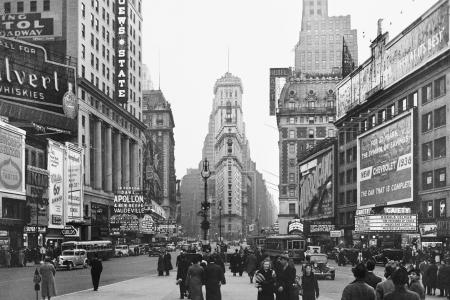Have you ever wondered what makes New York City so special? It’s not just the towering skyscrapers or the bustling streets. The real magic of the Big Apple lies in its people – a vibrant tapestry woven from countless cultures, traditions, and stories. Join me as we take a stroll through time, exploring the diverse threads that have shaped the history of New York City into the colorful masterpiece it is today.
New York City is like a giant pot of cultural gumbo, simmering with flavors from every corner of the globe. Each immigrant wave has added its own unique spice, creating a dish that’s both comfortingly familiar and excitingly new. From the Dutch settlers of New Amsterdam to the latest arrivals seeking the American Dream, every group has left an indelible mark on the city’s character.
So, let’s dive into this melting pot and discover how diversity has been the secret ingredient in New York’s recipe for success!
The Native Roots: Lenape and Early Inhabitants
Long before the first European ships appeared on the horizon, the area we now call New York City was home to the Lenape people. These Native Americans lived in harmony with the land, fishing in the abundant waters and cultivating the fertile soil. Their deep connection to nature and sustainable practices offer us valuable lessons even today.
Key aspects of Lenape culture:
- Seasonal migrations between coastal and inland areas
- Complex social structure and rich oral traditions
- Sustainable hunting and farming practices
The Lenape’s legacy lives on in many place names throughout the region, reminding us of the city’s first inhabitants and their profound respect for the natural world.
Dutch Beginnings: New Amsterdam Takes Shape
In 1624, the Dutch West India Company established a trading post on Manhattan Island, marking the birth of New Amsterdam. This small settlement would eventually grow into the metropolis we know today. The Dutch brought with them their own unique culture, including:
- Innovative engineering: They introduced the concept of land reclamation, which would prove crucial in expanding the city.
- Religious tolerance: New Amsterdam welcomed people of various faiths, setting a precedent for future diversity.
- Entrepreneurial spirit: The Dutch emphasis on trade laid the foundation for New York’s future as a global commercial hub.
British Rule and the American Revolution
When the British took control in 1664, renaming the city New York, they brought new influences and challenges. The city became a hotbed of revolutionary fervor during the American Revolution, with events like:
- The Sons of Liberty organizing resistance against British rule
- The Battle of Long Island, the largest battle of the Revolutionary War
- George Washington’s strategic retreat from New York, which helped turn the tide of the war
Throughout these tumultuous times, New York’s diverse population played crucial roles on both sides of the conflict, showcasing the complex tapestry of loyalties and beliefs that would continue to characterize the city.
The Great Waves: 19th Century Immigration
The 19th century saw an explosion of immigration that would forever change the face of New York City. Millions of people from across Europe and beyond flocked to the city, each group adding new threads to the urban fabric:
- Irish immigrants: Fleeing famine, they brought their strong work ethic and vibrant culture.
- German arrivals: They established thriving communities and introduced new traditions like beer gardens.
- Italian newcomers: Their influence on food, art, and family life became integral to New York’s character.
- Jewish refugees: Escaping persecution, they built tight-knit communities and contributed significantly to the city’s intellectual and cultural life.
These waves of immigration transformed New York into a truly global city, with each neighborhood becoming a world unto itself.
Ellis Island: Gateway to the American Dream
For millions of immigrants, Ellis Island was their first glimpse of America. This small island in New York Harbor processed over 12 million newcomers between 1892 and 1954, earning it the nickname “The Golden Door.” The stories of hope, fear, and determination that played out here are woven into the very soul of New York City.
Notable Ellis Island facts:
- At its peak, it processed up to 5,000 people per day
- Over 40% of all current U.S. citizens can trace at least one of their ancestors to Ellis Island
- The island now houses a museum celebrating the immigrant experience
The Harlem Renaissance: African American Cultural Explosion
In the 1920s and 1930s, Harlem became the epicenter of African American culture, giving birth to an unprecedented outpouring of literature, music, and art. This period, known as the Harlem Renaissance, saw the emergence of iconic figures like:
- Langston Hughes, whose poetry captured the African American experience
- Duke Ellington, who revolutionized jazz music
- Zora Neale Hurston, whose novels explored Black life in the rural South
The Harlem Renaissance not only enriched New York’s cultural landscape but also had a profound impact on American culture as a whole, challenging racial stereotypes and celebrating Black identity.
Post-World War II: A New Era of Diversity
The aftermath of World War II brought new waves of immigrants to New York City, further diversifying its population:
- Puerto Rican migration: The Great Migration from Puerto Rico transformed neighborhoods like East Harlem.
- Chinese immigrants: Relaxed immigration laws led to the expansion of Chinatown and the creation of new Chinese communities.
- Dominican influx: Fleeing political instability, Dominicans established vibrant communities in areas like Washington Heights.
These new arrivals faced challenges but also brought fresh energy and ideas to the city, reinforcing New York’s reputation as a place of opportunity for all.
Civil Rights and Social Movements in NYC
New York City played a crucial role in various civil rights and social movements throughout the 20th century. From the labor struggles of the early 1900s to the LGBTQ+ rights movement that culminated in the Stonewall Riots of 1969, the city has been at the forefront of social change.
Key moments in NYC’s fight for equality:
- The formation of the NAACP in 1909
- The Women’s Strike for Equality in 1970
- The ongoing struggle for immigrant rights
These movements have shaped the city’s political and social landscape, making New York a beacon of progress and inclusivity.
The Melting Pot Boils Over: Late 20th Century Challenges
The late 20th century brought both triumphs and challenges for New York’s diverse communities. Economic downturns, urban decay, and social tensions tested the city’s resilience. However, these difficulties also sparked:
- Grassroots community organizing
- Creative solutions to urban problems
- A renewed appreciation for the city’s diverse neighborhoods
New York’s ability to weather these storms and emerge stronger is a testament to the strength found in its diversity.
21st Century New York: Embracing Global Diversity
As we move further into the 21st century, New York continues to evolve. The city now boasts:
- Over 800 languages spoken, making it the most linguistically diverse city in the world
- A majority-minority population, with no single ethnic group constituting a majority
- A thriving tech scene that attracts talent from across the globe
This continued influx of new ideas and perspectives ensures that New York remains at the cutting edge of global culture and innovation.
Neighborhoods as Cultural Mosaics
One of the most fascinating aspects of New York’s diversity is how it manifests in the city’s neighborhoods. Each area tells its own unique story:
- Little Italy: Once a thriving Italian enclave, now a smaller but vibrant reminder of the city’s Italian heritage.
- Jackson Heights: A microcosm of global diversity, where Indian sari shops sit next to Colombian bakeries.
- Brighton Beach: Known as “Little Odessa,” this neighborhood showcases Russian and Eastern European culture.
These neighborhoods and many others serve as living museums, preserving cultural traditions while also adapting to the changing face of the city.
Culinary Fusion: New York’s Diverse Food Scene
If there’s one area where New York’s diversity shines brightest, it’s in its food. The city’s culinary landscape is a delicious reflection of its multicultural heritage:
- Street food: From halal carts to pizza slices, the city’s street food scene is a global smorgasbord.
- Fusion cuisines: Innovative chefs combine culinary traditions to create exciting new flavors.
- Ethnic enclaves: Neighborhoods like Flushing and Sunset Park offer authentic tastes from around the world.
Food has become a universal language in New York, bringing people together across cultural boundaries.
Celebrating Diversity: Festivals and Parades
New York’s calendar is packed with events celebrating its diverse communities:
- The vibrant colors of the West Indian Day Parade
- The rhythmic beats of the Puerto Rican Day Parade
- The lantern-lit spectacle of the Chinese New Year celebrations
These events not only honor specific cultures but also invite all New Yorkers to join in the celebration, fostering understanding and unity.
The Arts: A Canvas for Cultural Expression
New York’s diverse population has made it a global center for the arts. From Broadway to street art, the city’s creative scene is a reflection of its multicultural soul:
- Museums: Institutions like El Museo del Barrio and the Museum of Chinese in America showcase specific cultural contributions.
- Music: From salsa to hip-hop, New York has been the birthplace of countless musical innovations.
- Literature: The city has inspired writers from diverse backgrounds, each offering a unique perspective on urban life.
Through art, New Yorkers continue to tell their stories and shape the city’s identity.
Looking Forward: New York’s Diverse Future
As we look to the future, New York’s diversity remains its greatest strength. The city continues to attract dreamers and doers from around the world, each adding their own thread to the urban tapestry. Challenges remain, including:
- Ensuring equitable access to opportunities for all communities
- Preserving cultural heritage in the face of gentrification
- Fostering dialogue and understanding between different groups
Yet, if history is any guide, New York will meet these challenges head-on, drawing on the collective strength of its diverse population to create innovative solutions.
In conclusion, the history of New York City is a testament to the power of diversity. From its humble beginnings as a Dutch trading post to its current status as a global metropolis, New York has been shaped by the contributions of countless cultures. This rich heritage not only makes the city a fascinating place to live and visit but also provides a model for how diverse communities can come together to create something truly extraordinary. As we face the challenges of the future, New York’s diverse history reminds us that our differences are not obstacles to overcome, but strengths to be celebrated.




